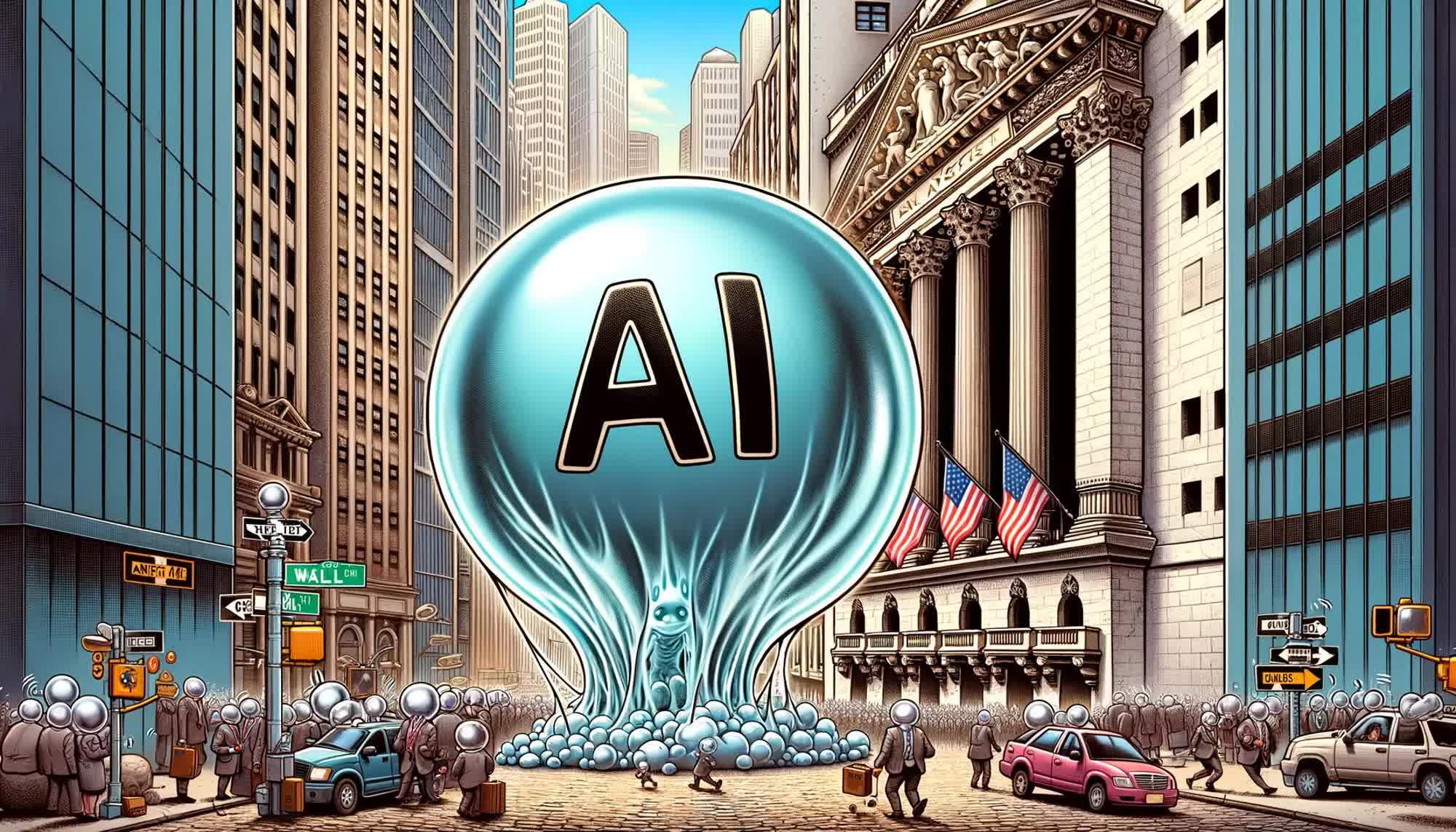Half of companies planning to replace customer service with AI are reversing course
-
Seems like it's cheaper and more efficient just to pay people to fuck on camera.
Probably not if you factor in the inefficiency of human digestion and wages.
-
You don't have to use the platform.
Unless I want to access customer service...
-
I called the local HVAC company and they had an AI rep. The thing literally couldn't even schedule an appointment and I couldn't get it to transfer me to a human. I called someone else. They never even called me back so they probably don't even know they lost my business.
is this something that happens a lot or did you tell this story before, because I'm getting deja vu
-
Thank fucking christ. Now hopefully the AI bubble will burst along with it and I don't have to listen to techbros drone on about how it's going to replace everything which is definitely something you do not want to happen in a world where we sell our ability to work in exchange for money, goods and services.
Amen to that

-
This post did not contain any content.
If the customer support of my ISP doesn't even know what CGNAT is, but AI knows, I am actually troubled whether this is a good move or not.
-
If the customer support of my ISP doesn't even know what CGNAT is, but AI knows, I am actually troubled whether this is a good move or not.
Try asking for a level 2 support tech. They'll normally pass your call to someone competent without any fuss.
-
This post did not contain any content.
I use it almost every day, and most of those days, it says something incorrect. That's okay for my purposes because I can plainly see that it's incorrect. I'm using it as an assistant, and I'm the one who is deciding whether to take its not-always-reliable advice.
I would HARDLY contemplate turning it loose to handle things unsupervised. It just isn't that good, or even close.
These CEOs and others who are trying to replace CSRs are caught up in the hype from Eric Schmidt and others who proclaim "no programmers in 4 months" and similar. Well, he said that about 2 months ago and, yeah, nah. Nah.
If that day comes, it won't be soon, and it'll take many, many small, hard-won advancements. As they say, there is no free lunch in AI.
-
What a cucked judgement. I would have ruled for the plaintiff, with prejudice
Tell me you know nothing about contract law without telling me you know nothing about contract law.
-
They fought him over ~700CAD. Thats wild.
It wasn't the $700 dude you have to know that.
-
This post did not contain any content.
You've heard of Early Adopters
Now get ready for Early Abandoners.
-
If the customer support of my ISP doesn't even know what CGNAT is, but AI knows, I am actually troubled whether this is a good move or not.
See thats just it, the AI doesn't know either it just repeats things which approximate those that have been said before.
If it has any power to make changes to your account then its going to be mistakenly turning peoples services on or off, leaking details, etc.
-
I’m frankly amazed this many of them realized the sheer idiocy of their decision.
Ever sat in a boardroom? I have.
Decisions are not made based on proper market/business analysis, they are made knee-jerk by overprivileged idiots.
An example of this was when one of the companies I worked where I was in charge of all the online training.
Then the big fat morons who invested came into the boardroom, instructed us to change all of our training to Flash clips... Because he also had a financial interest in Macromedia.
We ended up losing massive business partners and investment firms (e: we made extremely industrial strength financial planning software). Because a huge part of it was being able to provide consistent, usable training material. The company was later purchased for a song and dance. Then shut down.
-
Unless I want to access customer service...
What? This isn't the only way to reach support, it's just one of many options for these companies. Just use email or whatever support form is on the website.
-
This post did not contain any content.
I had a shipment from Amazon recently with an order that was supposed to include 3 items but actually only had 2 of them. Amazon marked all 3 of my items as delivered. So I got on the web site to report it and there is no longer any direct way to report it. I ended up having to go thru 2 separate chatbots to get a replacement sent. Ended up wasting 10 minutes to report a problem that should have taken 10 seconds.
-
I had a shipment from Amazon recently with an order that was supposed to include 3 items but actually only had 2 of them. Amazon marked all 3 of my items as delivered. So I got on the web site to report it and there is no longer any direct way to report it. I ended up having to go thru 2 separate chatbots to get a replacement sent. Ended up wasting 10 minutes to report a problem that should have taken 10 seconds.
That is on purpose they want it to be as difficult as possible.
-
It wasn't the $700 dude you have to know that.
I'm aware. The idea is it had to escalate for him to get to the point of suing them. If they'd just eaten the cost, it most likely wouldn't have gone to court or come to light. Was my comment reductive? Sure.. but that was the point.
-
is this something that happens a lot or did you tell this story before, because I'm getting deja vu
It happens a lot.
I often choose my HVAC, plumber, electrician and lawn care teams in the same manner.
I call all of them. None answer. Few have voicemail set up. I leave voicemail with full contact info. I submit all of their web forms.
Maybe one of them answer the phone, or calls back, or replies to the web form. I usually go with that one, if I haven't already fixed it using YouTube, by then. -
Ever sat in a boardroom? I have.
Decisions are not made based on proper market/business analysis, they are made knee-jerk by overprivileged idiots.
An example of this was when one of the companies I worked where I was in charge of all the online training.
Then the big fat morons who invested came into the boardroom, instructed us to change all of our training to Flash clips... Because he also had a financial interest in Macromedia.
We ended up losing massive business partners and investment firms (e: we made extremely industrial strength financial planning software). Because a huge part of it was being able to provide consistent, usable training material. The company was later purchased for a song and dance. Then shut down.
Yes, that's why I'm amazed that any of them figured out the stupidity of their previous decisions.
-
I use it almost every day, and most of those days, it says something incorrect. That's okay for my purposes because I can plainly see that it's incorrect. I'm using it as an assistant, and I'm the one who is deciding whether to take its not-always-reliable advice.
I would HARDLY contemplate turning it loose to handle things unsupervised. It just isn't that good, or even close.
These CEOs and others who are trying to replace CSRs are caught up in the hype from Eric Schmidt and others who proclaim "no programmers in 4 months" and similar. Well, he said that about 2 months ago and, yeah, nah. Nah.
If that day comes, it won't be soon, and it'll take many, many small, hard-won advancements. As they say, there is no free lunch in AI.
And a lot of burnt carbon to get there

-
Yes, that's why I'm amazed that any of them figured out the stupidity of their previous decisions.
It comes from that massive disconnect that people are largely unaware of, which is the assumption that people
purchasee:invest in businesses to help run them more efficiently and become more profitable.That really has very little to do with it! It's a giant shell game. I believe the initial investors came in to disrupt our company, to prime it for fire-sale later. To make us so incredibly uncompetitive that we effectively had to shut the doors. It worked!







